
Where We Be
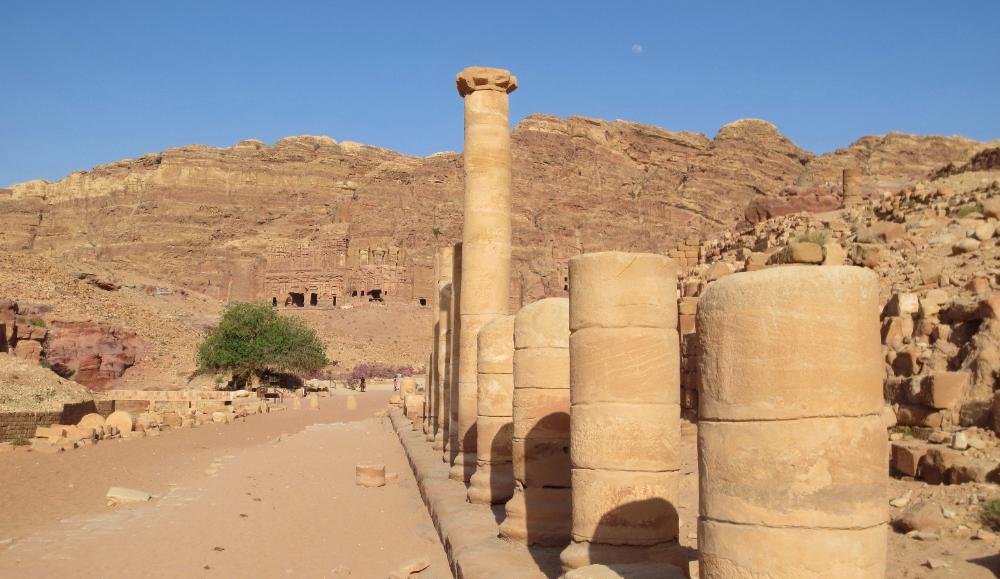
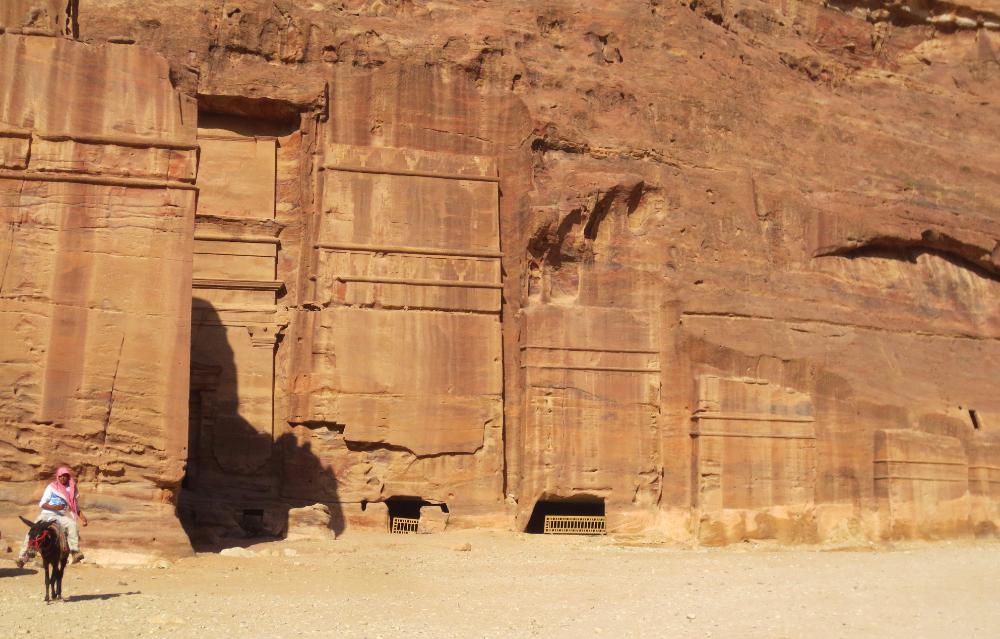
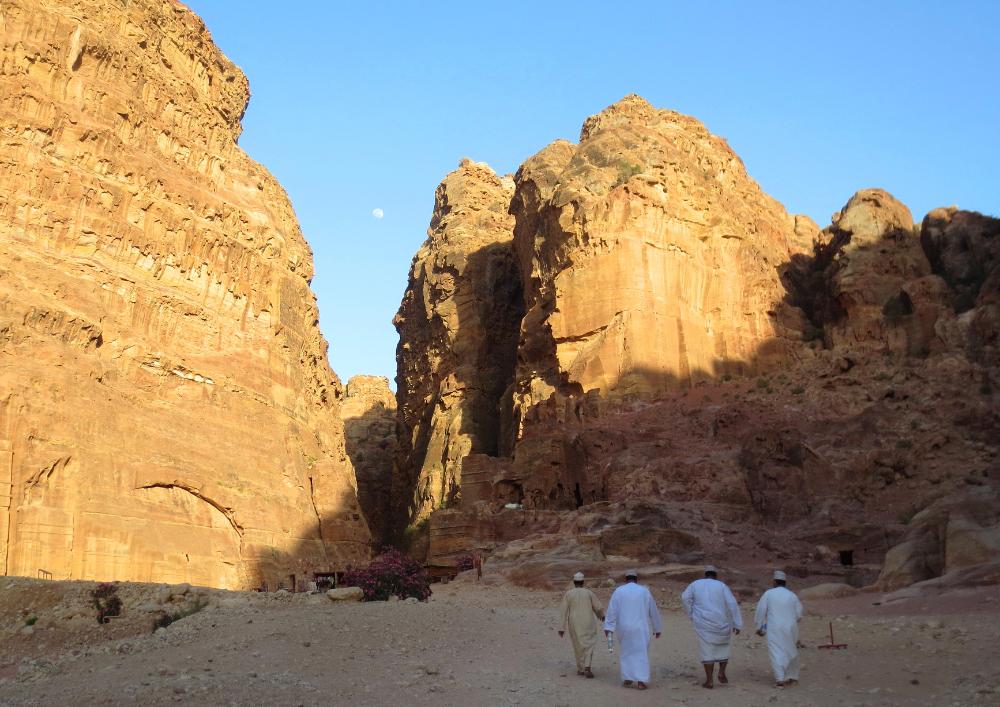
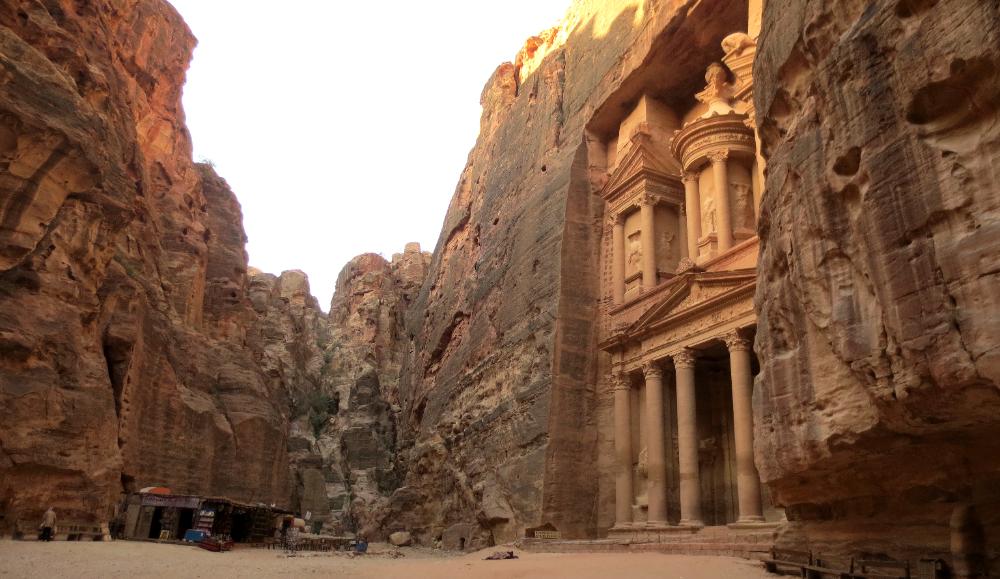
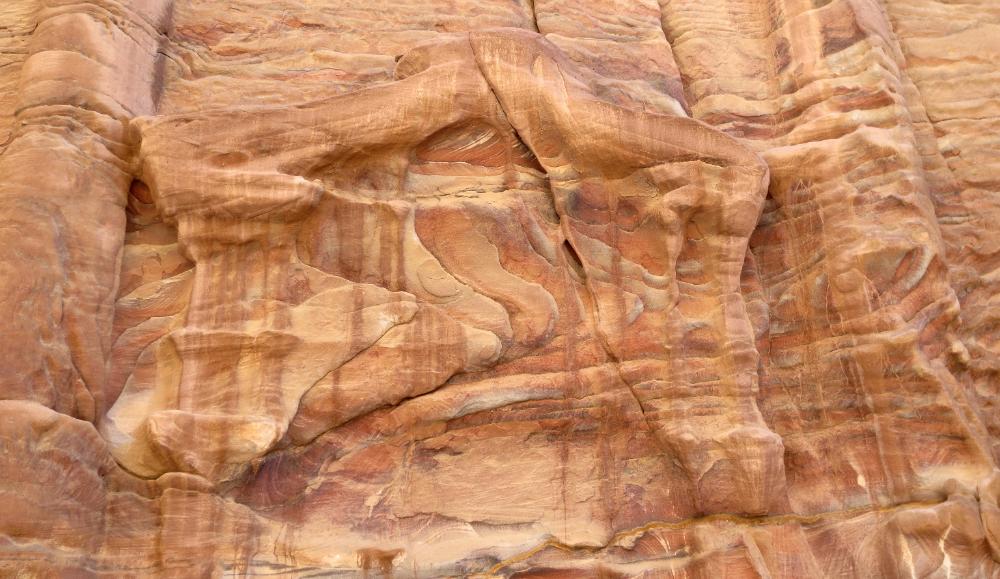
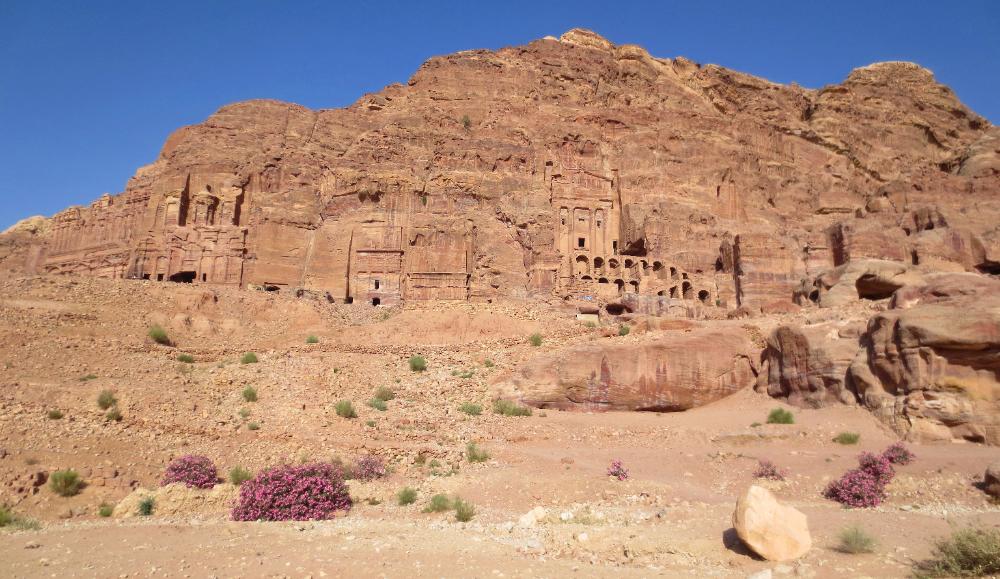
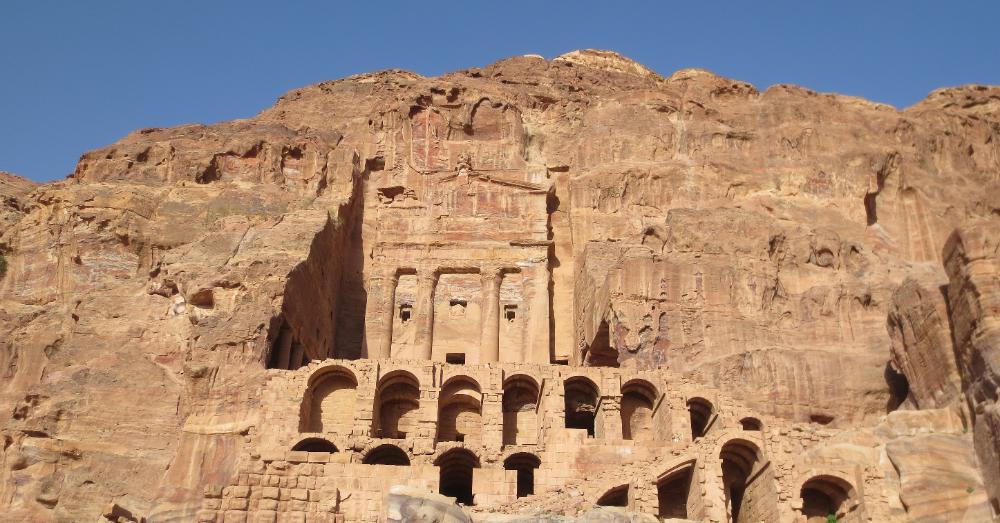
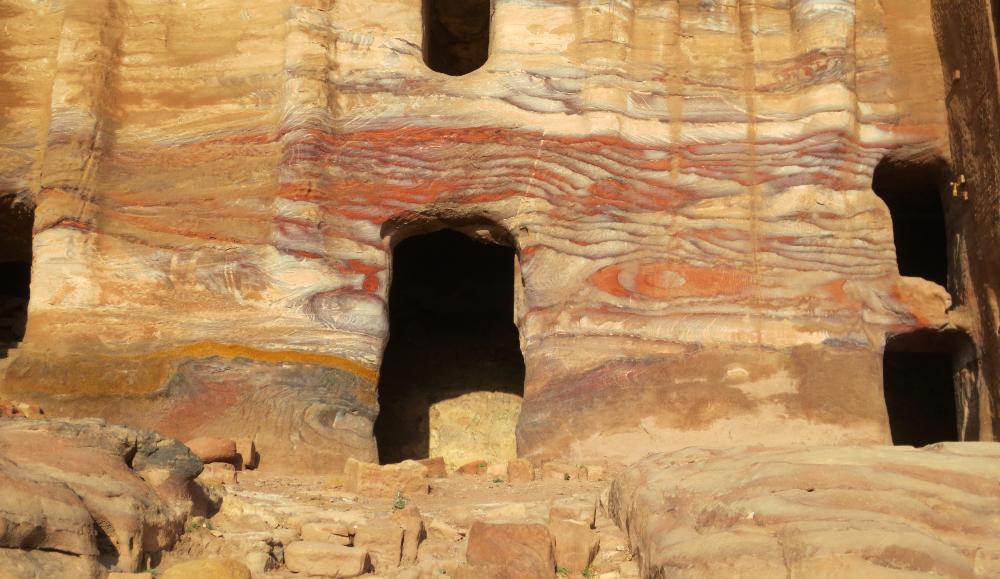
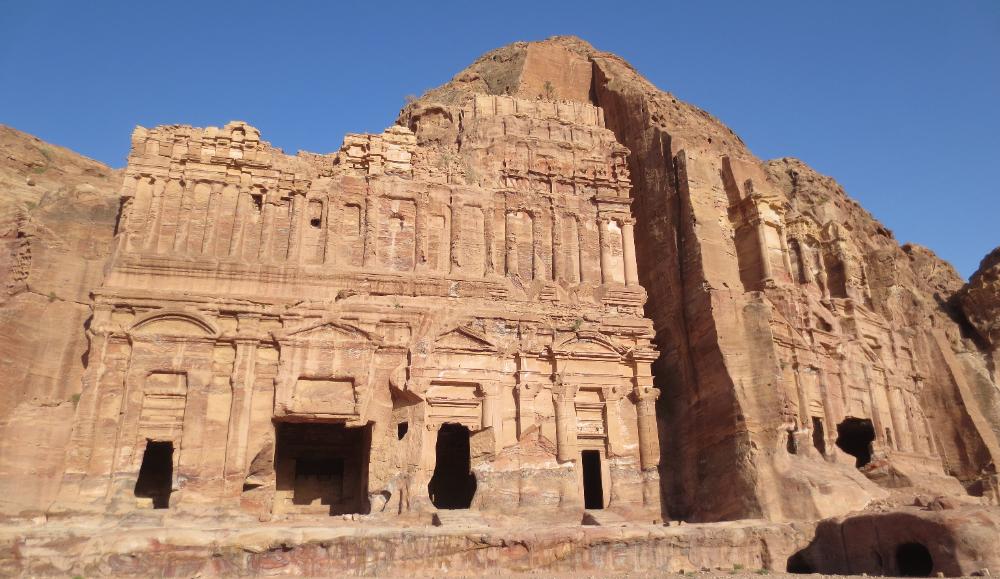
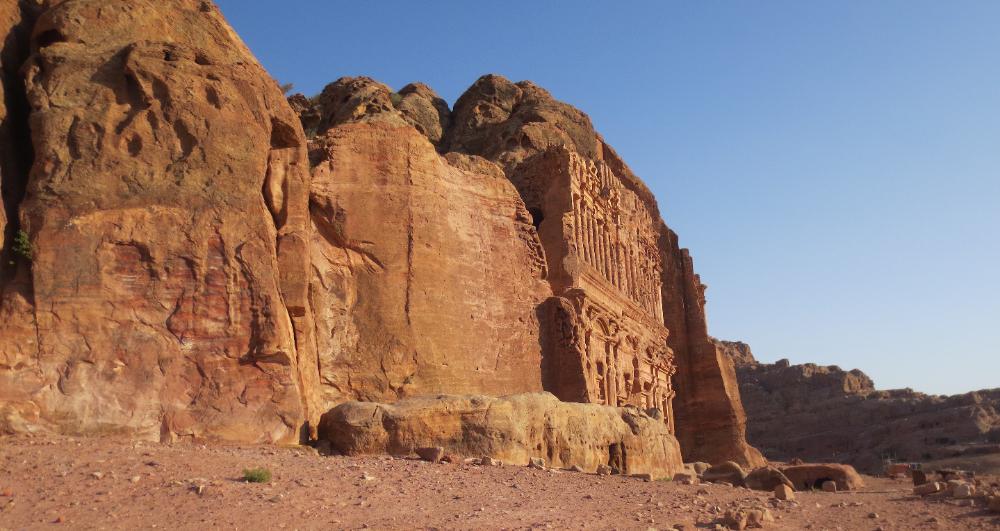
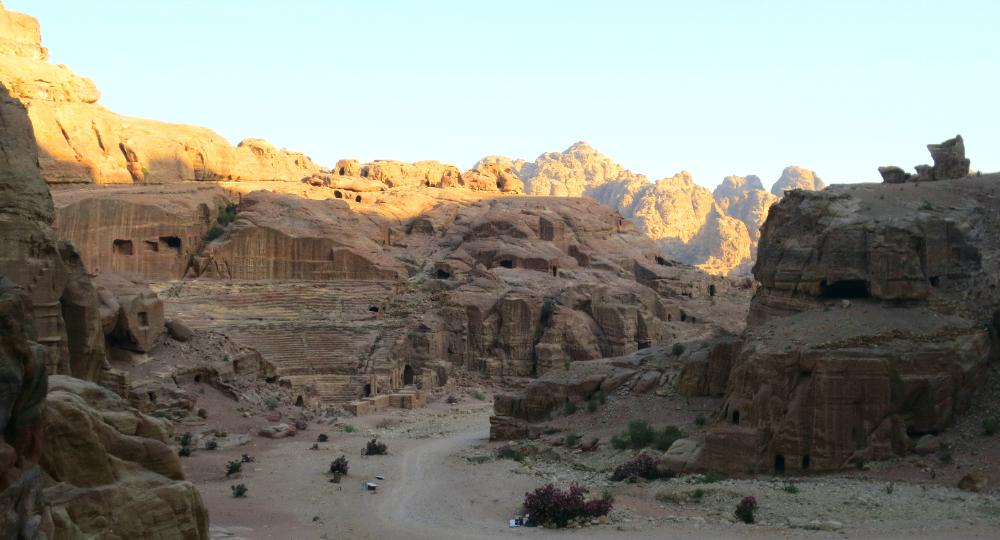
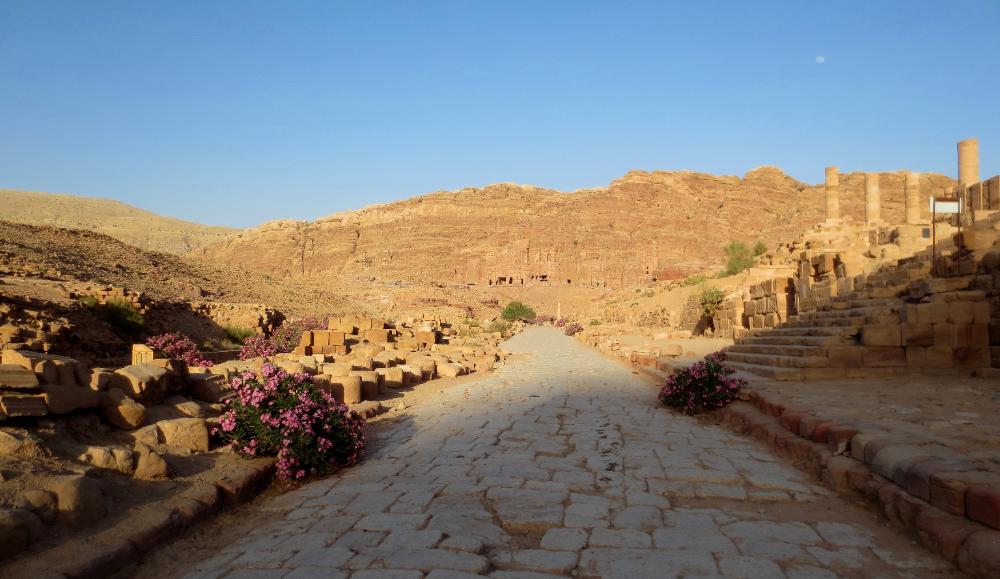
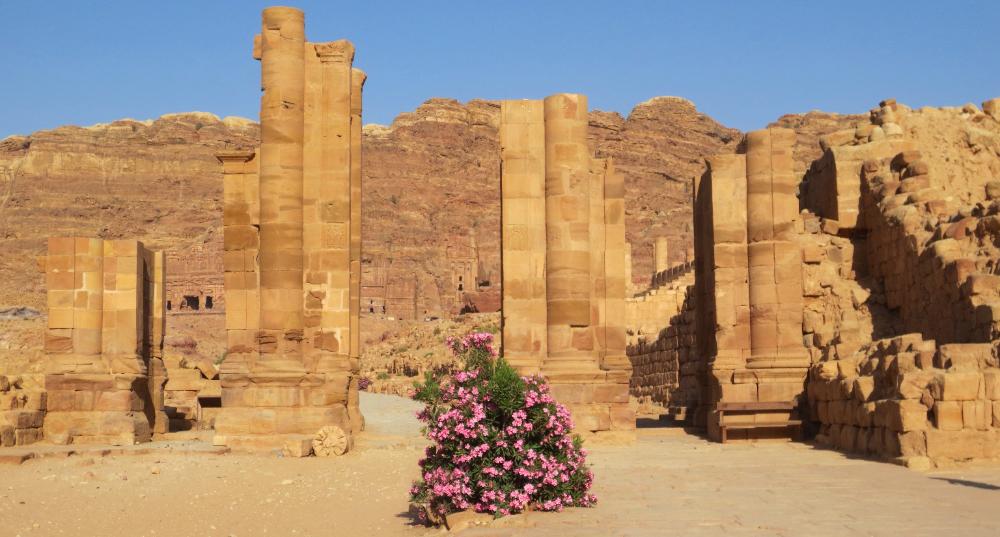
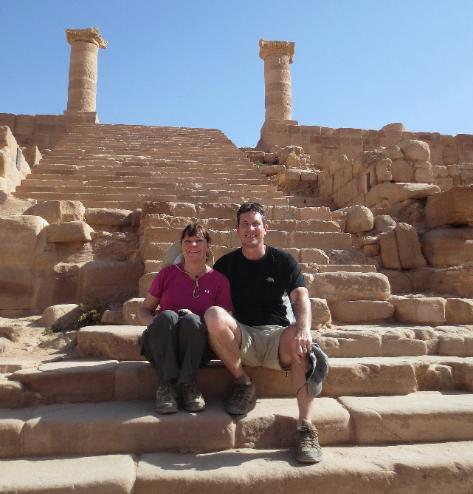

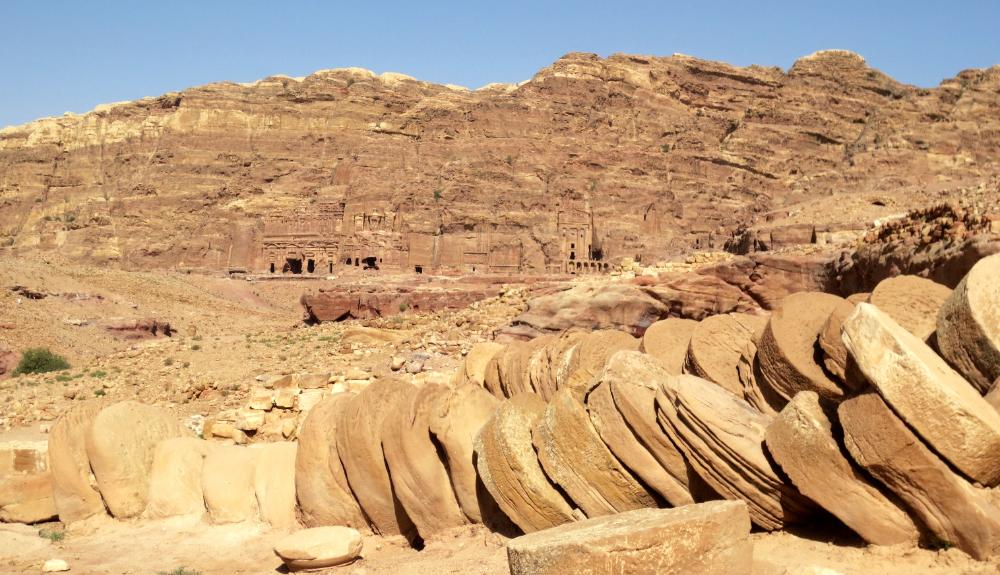
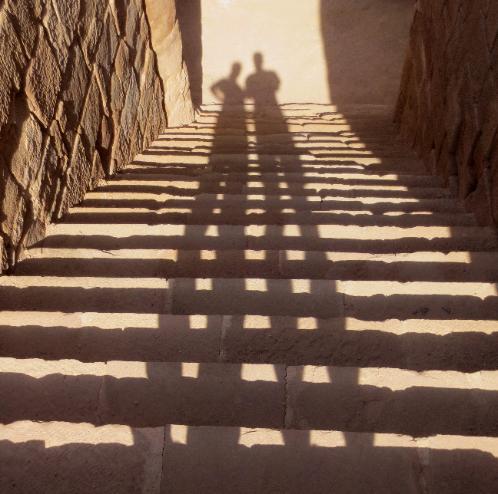
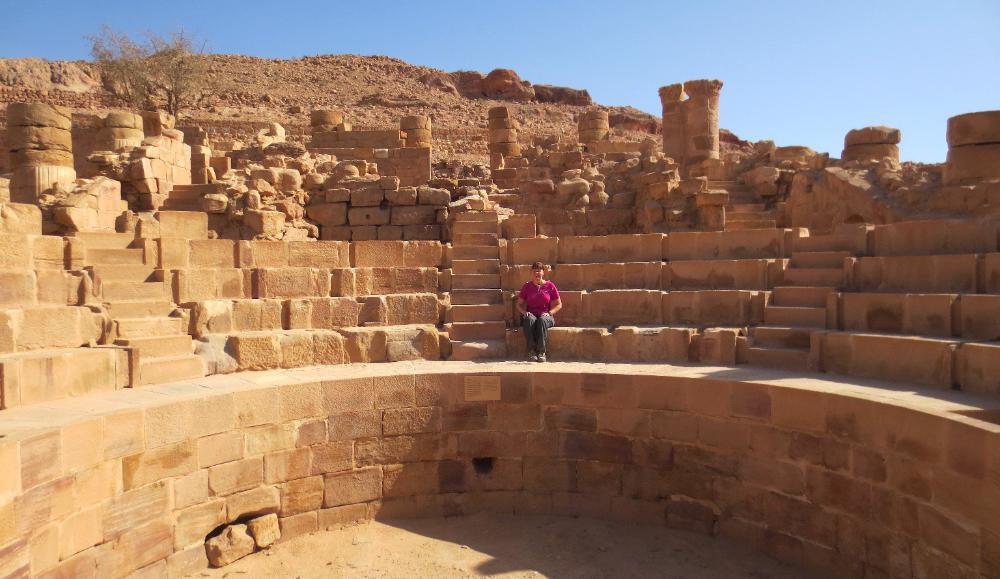
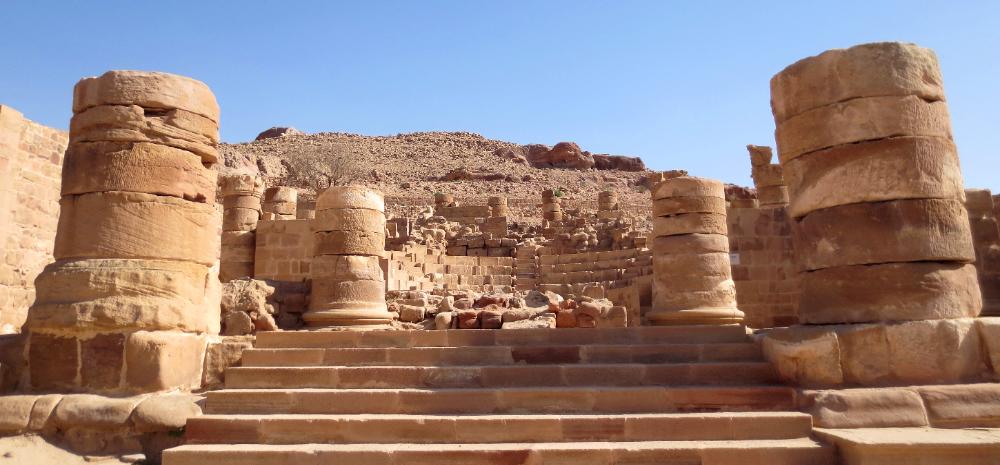
| Petra, Jordan -- The Ancient City |
Our full day of exploring Petra was both magical
and exhausting. We awoke at 6 am and threw on
our clothes so we could be at the entrance gate
close to when it opened; as a result we had
Petra virtually to ourselves. Our morning walk
through the Siq was delightfully empty of fellow
tourists, and the lighting was lovely. When we
turned a corner and suddenly found ourselves
face to face with the chiseled facade of the
Khazneh, or Treasury -- Petra's pride and joy --
our enchantment with the city was complete. We
shared the view with just four other people so it
was easy to soak up the atmosphere. Built in
the 1st century BC, it’s not really a treasury but
rather an elaborate tomb. Its classical lines
contrast startlingly with the sinuous lines of the
Siq, making for an irresistible combination. We
photographed the Treasury nearly to death
before moving on to the rest of the complex.
Petra is a sizable city filled with royal tombs,
temples, a Roman amphitheater with seating for
7,000, a main street flanked by pillars called the
Roman Cardo, and two particularly worthwhile
day hikes (see the next web page), so it takes
time to explore. A 1-day pass costs a steep 50
JD each (currently about $75 US) while a 2-day
pass costs only 5 JD more, so it makes sense to
stay longer after all the effort of getting here.
Another good reason to stay overnight is to
share in the experience known as "Petra by
Night." For an extra 12 JD each you can re-enter
the gates at 8:30 pm (Mon, Wed, Thu only) and
follow a candle-lit path through the Siq to the
Khazneh, which is lit up by a sea of 1,800
candles. You sit and drink hot sweet tea while
listening to haunting Bedouin songs and staring
up at the softly lit ruins of a building carved out
of solid rock more than 2,000 years ago. Is this
as magical as it sounds? You bet! If you haven't
already fallen under the enchanting spell of
Petra, this should do the trick.
and exhausting. We awoke at 6 am and threw on
our clothes so we could be at the entrance gate
close to when it opened; as a result we had
Petra virtually to ourselves. Our morning walk
through the Siq was delightfully empty of fellow
tourists, and the lighting was lovely. When we
turned a corner and suddenly found ourselves
face to face with the chiseled facade of the
Khazneh, or Treasury -- Petra's pride and joy --
our enchantment with the city was complete. We
shared the view with just four other people so it
was easy to soak up the atmosphere. Built in
the 1st century BC, it’s not really a treasury but
rather an elaborate tomb. Its classical lines
contrast startlingly with the sinuous lines of the
Siq, making for an irresistible combination. We
photographed the Treasury nearly to death
before moving on to the rest of the complex.
Petra is a sizable city filled with royal tombs,
temples, a Roman amphitheater with seating for
7,000, a main street flanked by pillars called the
Roman Cardo, and two particularly worthwhile
day hikes (see the next web page), so it takes
time to explore. A 1-day pass costs a steep 50
JD each (currently about $75 US) while a 2-day
pass costs only 5 JD more, so it makes sense to
stay longer after all the effort of getting here.
Another good reason to stay overnight is to
share in the experience known as "Petra by
Night." For an extra 12 JD each you can re-enter
the gates at 8:30 pm (Mon, Wed, Thu only) and
follow a candle-lit path through the Siq to the
Khazneh, which is lit up by a sea of 1,800
candles. You sit and drink hot sweet tea while
listening to haunting Bedouin songs and staring
up at the softly lit ruins of a building carved out
of solid rock more than 2,000 years ago. Is this
as magical as it sounds? You bet! If you haven't
already fallen under the enchanting spell of
Petra, this should do the trick.
| The classical lines of the Khazneh contrast strikingly with the sinuous lines of the Siq |
| Each of the pillars behind us is carved out of solid rock -- an impressive achievement |
| The pink-hued Khazneh changes colors depending on the time of day (early morning in this photo) |
| The Siq entry is just to the left of this photo. As you can see, the Khazneh is tucked into its own canyon. Turn to the right as you face the Khazneh and you emerge into the wider-open spaces of the Outer Siq. |
| The colorful rock walls in Petra are works of art in their own right |
| On the other side of the valley from the Amphitheater are the Royal Tombs, which are at their most striking in the warm glow of the late afternoon sun |
| The Royal Tomb farthest to the right, supported by two levels of arches, is called the Urn Tomb (there's a tiny urn on top) |
| Next to the Urn Tomb is the Silk Tomb, with some of the most beautiful rippling streaks of color we've ever seen in rock |
| Next up is the elaborate facade of the Palace Tomb (shown head-on) and the Corinthian Tomb (far right) |
| The Palace Tomb is the largest of the Royal Tombs. Its facade was once five levels high but its upper levels collapsed. |
| We detoured up a hillside staircase for this view down onto Petra's main street. Ahead is the Roman Amphitheater carved into solid rock. All around are simpler Nabataean tombs chiseled into the rock. |
| The Roman-style Cardo is Petra's main artery, flanked by pillars. We're looking back in this photo, towards the Royal Tombs. |
| Now we're back on the Cardo and standing at its furthest end, just inside the Temenos Gate. This is the imposing entrance to the sacred precinct of the city where the Qasr el-Bint is located (see below). |
| Stairs to the Great Temple |
| The Great Temple, originally one of the most impressive architectural wonders of Petra, was only rediscovered by archaeologists in 1992 |
| Stone circles, once stacked into columns, lie on their sides now at the Great Temple, with the Royal Tombs in the distance |
| The great stairs lead up to this 600-seat auditorium -- perhaps a smaller auditorium for the elite of Petra? |
| . We almost missed the Great Temple -- we walked right past the stairway on our first visit |
| Qasr al Bint was perhaps the most important temple in Petra. It's located at the end of the Cardo and represents the far point of most day tours. |
| Qasr al Bint is one of the few free-standing structures still standing in Petra after centuries of floods and earthquakes |
| Here we're looking from the Outer Siq back towards the Khazneh, which is tucked inside the canyon walls. It's near sunset in this photo and the moon is rising. |
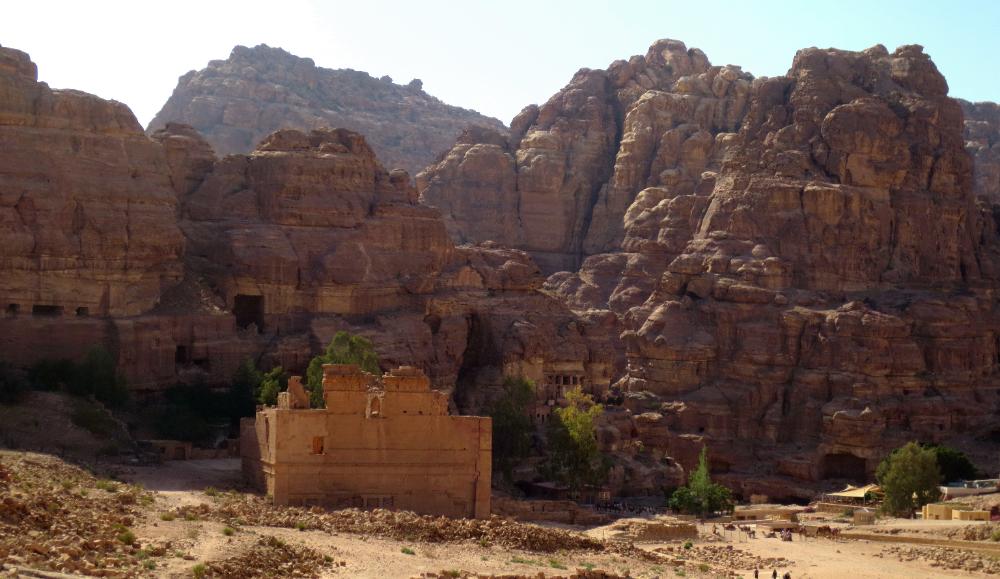
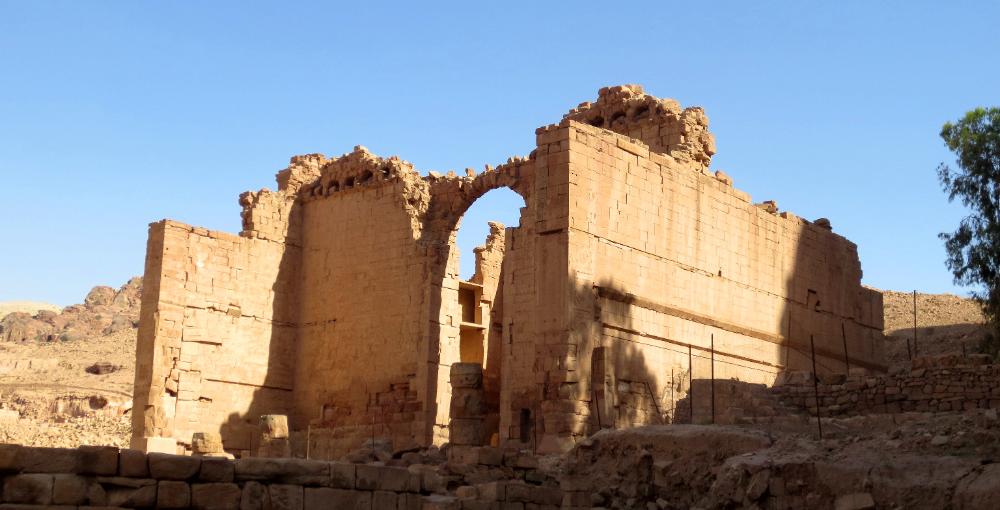
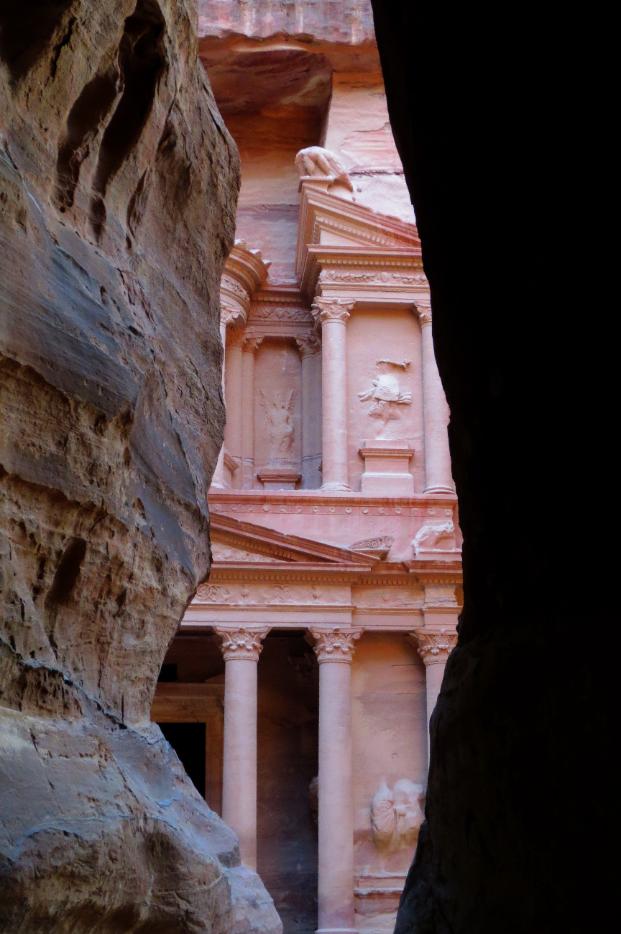
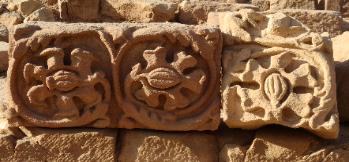
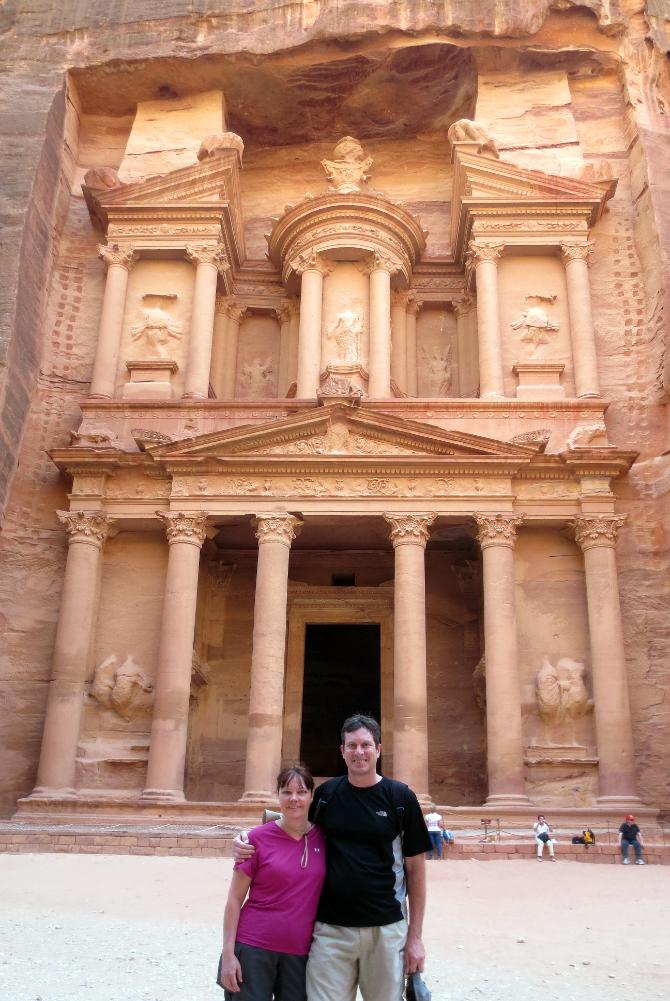
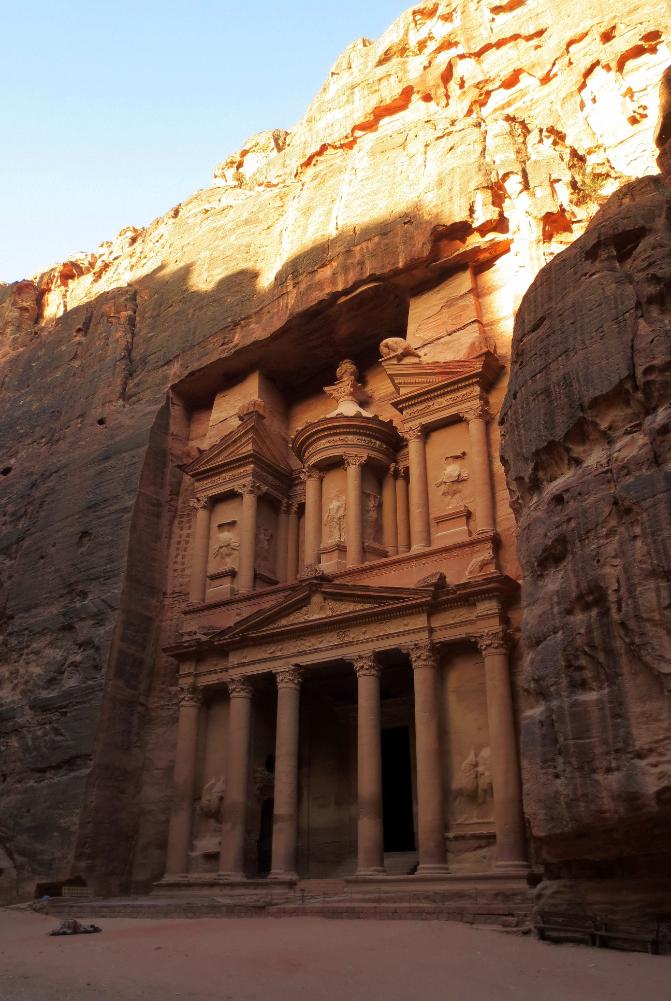
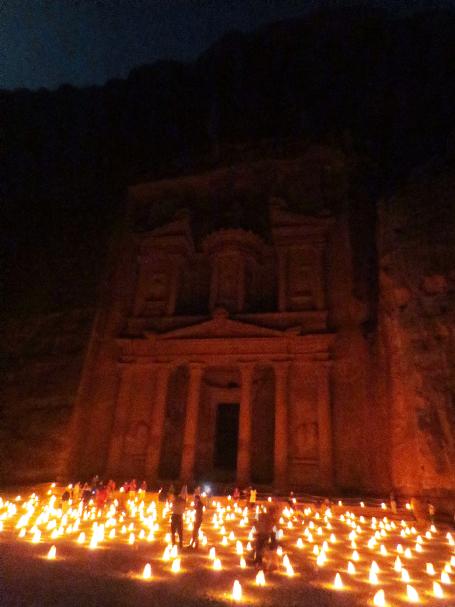
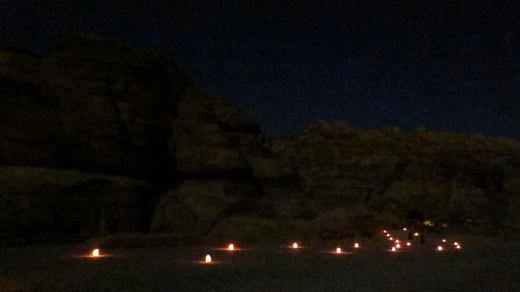
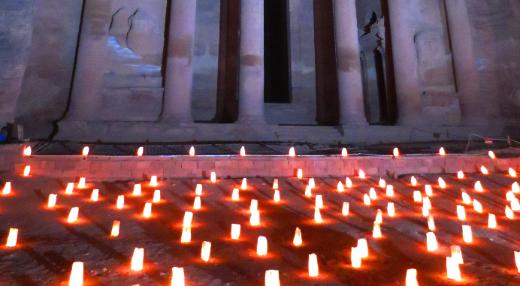
| These photos don't do justice to the magic that is "Petra by Night" -- we highly recommend including this experience as part of your tour |
| Continuing straight, you find yourself on the Street of Facades with its rows of carved Nabataean tombs |
| Again we're looking back from further along the Cardo. The stairs to the right lead up to the Great Temple. |
| Fun with shadows |